I think this is ultimately a pretty simple question, but it's hard to describe, thus, I provide a working example here (in the sample press 'z' to see rotation with unwanted translation and 'x' keys to rotate with a compensating re-position).
Basically, I am trying to rotate an object (a thumbstick) about the z-axis of a complex model loaded via gltf (a model of the oculus rift touch controller). It's easy to rotate about the x-axis because it's 90 deg. orthogonal to the x-axis. About the z-axis, it's harder because the plane the thumbstick is attached to is angled at 30 deg. I realize that if the thumbstick were using local coordinates, this wouldn't be a problem, but 'thumb.rotation.z' does not seem to be using local coordinates and is rotating about the model's (as a whole), or maybe even the scene's global y and z (?). Anyway, after a bunch of futzing around, I was able to get things to work by doing the following:
// occulus plane is angle at 30 deg, which corresponds to
// 5 units forward to 3 units down.
var axis = new THREE.Vector3(0, 5, -3).normalize();
factory.thumbstick.geometry.center();
var dir = (evt.key === 'x' ? 1 : -1);
thumb.rotateOnAxis(axis, factory.ONE_DEG * 5.0 * dir);
Basically, I'm rotating about a "tilted" axis, and then calling 'center' to make thumbstick centered on the pivot point, so it rotates about the pivot point, rather than around the pivot point (like the earth orbiting the sun).
Only problem is that when you call 'geometry.center()' and then call 'rotateOnAxis', it translates the thumbstick to the pivot point:
Note: the position on the thumbstick object is (0,0,0) before and after the calls.
I have empirically determined that if I alter the position of the thumbstick after the translation like so:
// magic numbers compensating position
var zDisp = 0.0475;
var yDisp = zDisp / 6.0
thumb.position.x = 0.001;
thumb.position.y = -yDisp;
thumb.position.z = zDisp;
Then it (almost) returns back to it's original position:
Problem is these numbers were just determined by interactively and repeatedly trying to re-position the thumbstick i.e. empirically. I simply cannot find a programmatic, analytical, api kind of way to restore the original position. Note: saving the original position doesn't work, because it's zero before and after the translation. Some of the things I tried were taking the difference between the bounding spheres of the global object and the thumbstick object, trying to come up with some 'sin x- cos x' relation on one distance etc. but nothing works.
My question is, how can I progammatically reverse the offset due to calling 'geometry.center()' and rotateOnAxis (which translates to the pivot point), without having to resort to hacked, empircal "magic" numbers, that could conceivably change if the gltf model changes.
Of course, if someone can also come up with a better way to achieve this rotation, that would be great too.
What's throwing me is the (peceived?) complexity of the gltf model itself. It's confusing because I have a hard time interpreting it and it's various parts: I'm really not sure where the "center" is, and in certain cases, it appears with the 'THREE.AxesHelper' I'm attaching that what it shows as 'y' is actually 'z' and sometimes 'up' is really 'down' etc, and it gets confusing fast.
Any help would be appreciated.

